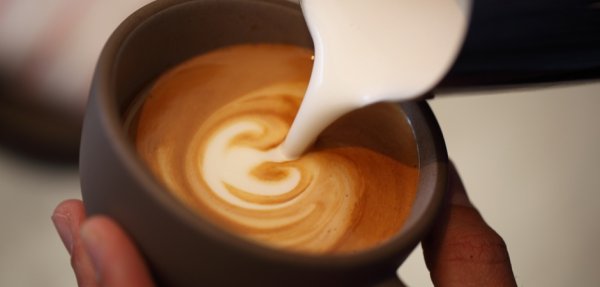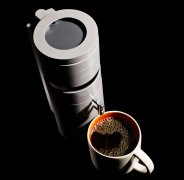Coffee blending and coffee roasting Italian coffee blending cappuccino coffee Italian blending
Coffee starts with "origin" and "taste", of course, without "variety", because at first people only consume coffee grown in the area around them. However, with the development of trade, the types of coffee are gradually mixed. Today, although good coffee from a single variety or origin can be directly cited, coffee is essentially a mixed drink-like champagne or some wines. Indeed, some people think that the best coffee is made by mixing the best qualities of different coffees-the bright acidity, the rich floral aroma, and the mellow taste.
Blending has been an art form for a long time-MochaMysore is a popular combination of two different varieties of coffee, focusing on the mild aroma of Mysore and the strong flavor of Mocha-but generally speaking, it is only for commercial purposes. The primary goal of Robusta blending Arabica is to reduce its price, and there is no denying that almost all blends created can produce better economic profits than a single variety of coffee sold separately.
The key to matching is that the nature must be continuous and consistent. All commercial blends aim for stability, and some of them are excellent, such as Finnish Paulig, Swedish Gevalia, Zeogas and AvidNorquis and Dutch DonweEgberts, which are unique premium coffee mixes.
For people who have just started drinking coffee, breakfast coffee is an ideal choice. This is a carefully roasted coffee, usually made of African coffee with milk, or a mixture of two moderately roasted Kenyan and Colombian coffees to start a refreshing and fragrant day. Mix coffee with the same ingredients after a meal, but roast them deeply to tap for more flavor. One of the best is Indonesian coffee, which is mixed with a little Kenyan and Costa Rican coffee to make the coffee more unique and elegant.
The coffee that is already rich and deeply roasted has an obvious bitter taste at first, but you'll soon get used to it. The strongest coffee is a deep-roasted continental blend, which is made into Italian concentrate and is popular throughout southern Italy for its unique bitterness, but almost no one cares about it elsewhere. The blended coffee in northern Italy has a light roasting degree, uniform texture and soft acidity, such as high-quality wine.
Nothing can stop you from creating your own match, but it doesn't advocate mixing two opposing beans, such as Ethiopia and Sumatra. When the two are mixed, the wine smell of Ethiopian beans makes the strong smell of Sumatran beans smell like dirt. But you can try mixing good Colombian and Sumatran beans, or try to find the best match between deep-baked and light-baked beans.
For some people who want coffee that tastes soft and not bitter, Arabica such as Columbia beans or Chagga in Tanzania can try, although Chagga has a slight acidity. For those coffee with strong flavor, it depends on how well it is roasted. Of course, for coffee, especially soft varieties like Brazil and Costa Rica, although you can roast them deep and taste strong, they can't be any more bitter. But if you add a little Robusta to it, you'll get a little astringent, a little bold. You can mix different flavors and characteristics in different combinations. Chagga-Java-Mocha is a good example, which includes the mellow taste of Java, the soft acidity of Chagga and the rich texture of Mocha.
The ideal way is to buy a small amount of raw beans, bake them yourself, and grind the beans directly before making coffee. However, most of us have to buy baked beans, and maybe this number will increase in the near future.

When storing beans, the biggest enemy is water. The volatile oils that give us aroma in the cup are soluble in water, and a humid environment can affect the oil. Do not store coffee in the refrigerator, because once the coffee is opened, the moisture will condense on the surface of the container.
If you want to store the coffee well at any time, the best way is to put it in the freezer and make sure it is encapsulated in a sealed bag. Baked beans can be stored in the freezer for more than a week. When you need them, don't try to thaw the beans, just put them in the grinder.
Another big enemy of coffee is oxygen, which breaks down volatile aromatic oils. This is the importance of grinding beans directly before making coffee. After the coffee is ground, its surface is exposed to the air, which means that the aromatic oil begins to volatilize and the flavor disappears in the air.
Don't store coffee next to products with strong flavors, such as tea. Coffee will quickly absorb the taste of other substances.
If you buy coffee by mail, it is best to buy only a small amount at a time. Although the quantity is good, you will lose the value of these coffees, just as you will lose their aroma.
Today, American consumers have more than 100 flavors of coffee to choose from, many of which are sold abroad. The production process of flavored coffee is to spread the roasted beans with medium oil and let them spray quickly in the fragrance to achieve. This practice began in the United States in the 1970s.
The most popular flavors are cocoa, mocha, bitter almonds and double cocoa. Orange wine and nutty flavors are also available, although strict coffee drinkers draw lines between raspberries, bananas and creamy beans to make a clear distinction. The newly introduced coffee flavor in the West is cardamom, which has long been added to coffee in the Middle East, while in Mexico, it is also a popular and traditional additive.
One problem for small shops and strict coffee drinkers is that for different flavors of coffee, they need a separate grinder, because any residue will affect the taste of the beans to be ground next time. When preparing a new flavor of coffee, you will find it necessary to buy a small and cheap grinder, or buy pre-ground coffee directly.
The first three most widely used coffee flavors in France and the United States are almonds, vanilla and hazelnuts. Their best selling time is in summer, because they usually drink less coffee in summer, and iced coffee is the most pleasant choice.
The phrase "decaffeinated coffee doesn't taste like coffee" is only partly true. Caffeine itself has no special taste except for mild bitterness. When caffeine is removed, it tastes different, only because other substances that contain fragrant flavors are also removed.
Raw beans from all over the world that want to be decaffeinated are shipped to Germany or Switzerland, where they are processed and sent to baking centers around the world. It is common that raw beans from Mexico are sent to Switzerland to get rid of caffeine and then across the Atlantic to roasters in San Diego before returning to their place of origin.
Important Notice :
前街咖啡 FrontStreet Coffee has moved to new addredd:
FrontStreet Coffee Address: 315,Donghua East Road,GuangZhou
Tel:020 38364473
- Prev

Decaf Coffee Italian Coffee Powder with Coffee beans and Chocolate Flavor
The term "fine coffee" was first put forward by Ms. Knudsen of the United States in Coffee and Tea magazine. At that time, Ms. Knudsen, as a coffee buyer at B.C. Ireland in San Francisco, was very dissatisfied with the neglect of the quality of raw coffee in the industry, and even some big roasters mixed a large amount of Robesda beans in the comprehensive beans, so she put forward the concept of boutique coffee.
- Next

Requirements for the quality of fancy Coffee Milk foam Coffee latte Condensed blend Formula
The term "fine coffee" was first put forward by Ms. Knudsen of the United States in Coffee and Tea magazine. At that time, Ms. Knudsen, as a coffee buyer at B.C. Ireland in San Francisco, was very dissatisfied with the neglect of the quality of raw coffee in the industry, and even some big roasters mixed a large amount of Robesda beans in the comprehensive beans, so she put forward the concept of boutique coffee.
Related
- Beginners will see the "Coffee pull flower" guide!
- What is the difference between ice blog purified milk and ordinary milk coffee?
- Why is the Philippines the largest producer of crops in Liberia?
- For coffee extraction, should the fine powder be retained?
- How does extracted espresso fill pressed powder? How much strength does it take to press the powder?
- How to make jasmine cold extract coffee? Is the jasmine + latte good?
- Will this little toy really make the coffee taste better? How does Lily Drip affect coffee extraction?
- Will the action of slapping the filter cup also affect coffee extraction?
- What's the difference between powder-to-water ratio and powder-to-liquid ratio?
- What is the Ethiopian local species? What does it have to do with Heirloom native species?

